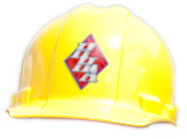The Best Tune-Up In Town
Our Tune-Up Can
Lower utility bills by reducing energy use and waste
Extend equipment life
Improve system reliability for fewer breakdowns and repairs
Increase cooling & heating capacity and efficiency
And increase your peace of mind!
Under our Tune-Up Program, all service department parts, materials, and labor qualify for a 15% discount (excluding diagnostic fee). This applies to every unit you own that is protected by our annual agreement.
Call us today about our SPECIAL RATES for this great investment!
Spring Air Conditioning Tune-Up
Chemically clean & thoroughly wash condenser coils.
Inspect standard air-filters.
Wash & check condensing unit for proper motor & bearing wear.
Lubricate motor & fan bearings & other moving parts as necessary.
Clean & inspect evaporator coil and drain pan when readily accessible.
Clean & inspect condensate drain lines & fittings.
Clean, level, & calibrate thermostat.
Inspect blower motor & fan assembly.
Inspect, tighten, & test all electrical connections, including disconnect switch.
Inspect all cooling system electrical wires, connectors & terminals.
Test system starting & running capacitors.
Test all controls, switches, relays, transformers, contacts, motors, & fans.
Measure starting & running amperes, line voltage, and control voltage.
Test system-starting capabilities.
Test system for proper airflow & air delivery.
Inspect & adjust all safety controls.
Monitor refrigerant (Freon) pressures & temperatures.
Test & record super-heat & sub-cooling. Compare with factory specifications.
Adjust Freon metering control device to factory/manufacturer's recommendations.
Test air-conditioning system for proper production & capacity.
Present a full written report.
Fall Heating System Tune-Up
Inspect & tighten all electrical connections.
Remove, clean, & adjust main gas burners.
Remove, clean, & adjust ignition/pilot assembly.
Inspect heat-exchangers & combustion chambers for any cracks, rusting, or problem areas.
Inspect blower compartment, return air-drop & surrounding area. (No duct cleaning).
Inspect the flue assemble & test flue gas drafting mechanism.
Test heating-system safety controls.
Test, record, & adjust gas pressure.
Inspect air filters.
Inspect blower motor, drive mechanism & fan assembly.
Lubricate all fan motors & all moving parts.
Measure & adjust blower for correct airflow.
Adjust all dampers & set proper blower speeds.
Clean, level, test & calibrate the thermostat.
Measure & record heating system output.
Inspect & test thermocouple output & pilot safety switch.
Measure & record electrical voltage amperage & component resistance.
Inspect & reset all system transformers, relays, contractors, & controls. Measure performance.
Advice on other ways to reduce energy consumption, improve safety & enhance comfort.
Present a full written report.

